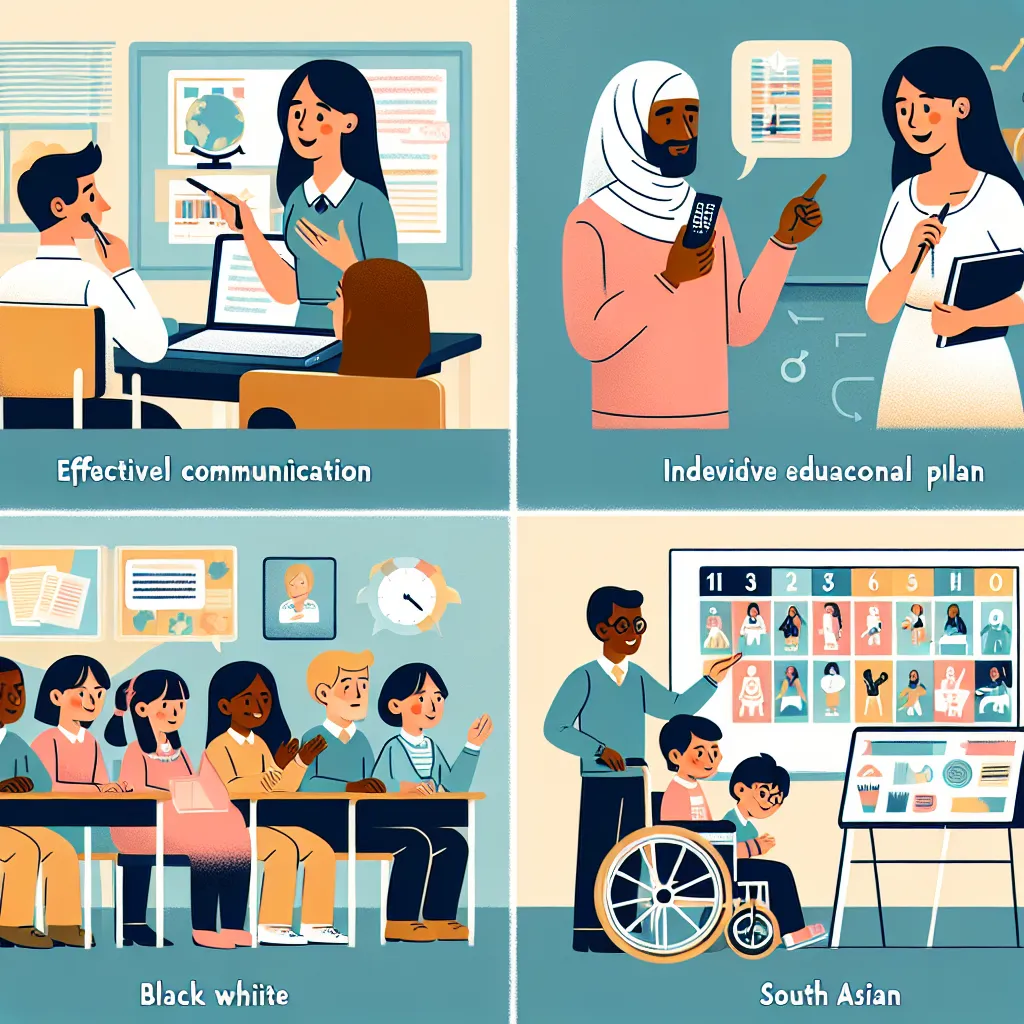Ask AI on The Internet
Question: Describe the diversity present in the classroom (backgrounds, cultures, and so on). Explain how the mentor teacher adapted their teaching and learning because of the specific class dynamics and describe how it influenced the learner neither positively and negatively.
Classroom diversity can encompass a range of factors, including but not limited to cultural, linguistic, socioeconomic, and educational backgrounds. Here's a more detailed breakdown and the potential influences on teaching and learning: ### Diversity in the Classroom 1. **Cultural Backgrounds:** Students may come from different cultural traditions, which can influence their perspectives, values, and interactions in the classroom. 2. **Linguistic Diversity:** Some students might be English Language Learners (ELLs) or bilingual/multilingual, presenting both challenges and opportunities in communication and instruction. 3. **Socioeconomic Status:** Variability in students' access to resources (such as books, technology, extracurricular activities, etc.) can also affect their learning experiences and outcomes. 4. **Educational Backgrounds:** Students may enter the classroom with differing levels of prior knowledge and educational experiences, impacting how they engage with new material. 5. **Differing Abilities:** Including physical, cognitive, and emotional differences that necessitate various instructional approaches and support mechanisms. ### Adaptations by the Mentor Teacher 1. **Culturally Responsive Teaching:** The mentor teacher might integrate cultural references into the curriculum, ensuring that the materials and examples used are relevant to the students' backgrounds. This can foster a more inclusive and engaging environment. - **Positive Influence:** Students feel recognized and valued, which can enhance engagement and motivation. - **Negative Influence:** If not managed carefully, this can inadvertently spotlight and discomfort students who prefer not to be singled out for their backgrounds. 2. **Differentiated Instruction:** Tailoring instruction to meet the diverse needs of students by providing different paths to learning the same content. - **Positive Influence:** Helps all students access the curriculum at their level and in a way that suits their learning style, leading to better understanding and retention. - **Negative Influence:** Can be resource-intensive and challenging to manage effectively, potentially leading to discrepancies in instructional quality. 3. **Language Support:** Implementing strategies such as visual aids, bilingual resources, and peer support for ELLs. - **Positive Influence:** Enhances comprehension and participation for non-native speakers, promoting a more equitable learning environment. - **Negative Influence:** May slow down the pace of instruction for native speakers if not well-balanced. 4. **Social-Emotional Learning (SEL):** Incorporating SEL to address the emotional and social needs of students from diverse backgrounds. - **Positive Influence:** Builds a supportive classroom climate that is conducive to learning and personal growth. - **Negative Influence:** Without proper training, teachers might struggle to address the complex emotional needs of a diverse student body effectively. ### Influence on Learners 1. **Positive Influences:** - **Enhanced Engagement:** Students feel more connected to the curriculum and motivated to participate actively. - **Greater Inclusivity:** A classroom that recognizes and values diversity can reduce feelings of marginalization and foster a more inclusive atmosphere. - **Improved Outcomes:** Customizing teaching approaches can help address the specific needs of each learner, leading to better academic performance. 2. **Negative Influences:** - **Increased Complexity:** Managing a highly diverse classroom requires considerable skill and effort, which can sometimes lead to inconsistencies in instruction. - **Potential for Division:** If not handled carefully, differentiation strategies might inadvertently create a divide among students, leading to feelings of favoritism or unfairness. - **Resource Strain:** Teachers might feel overwhelmed by the need to develop multiple resources or strategies to accommodate all students, potentially impacting their well-being and effectiveness. Overall, successfully managing a diverse classroom involves ongoing reflection, adaptation, and a commitment to equity and inclusivity. Ensuring that all students feel supported and are provided with equitable opportunities to succeed is crucial for a positive and productive learning environment.
Think your answer is better than the AI's? Post it below.
Other Most Relevant Posts:
Question Tags
If you want your question answered by an AI, click here.







Post your own comment: